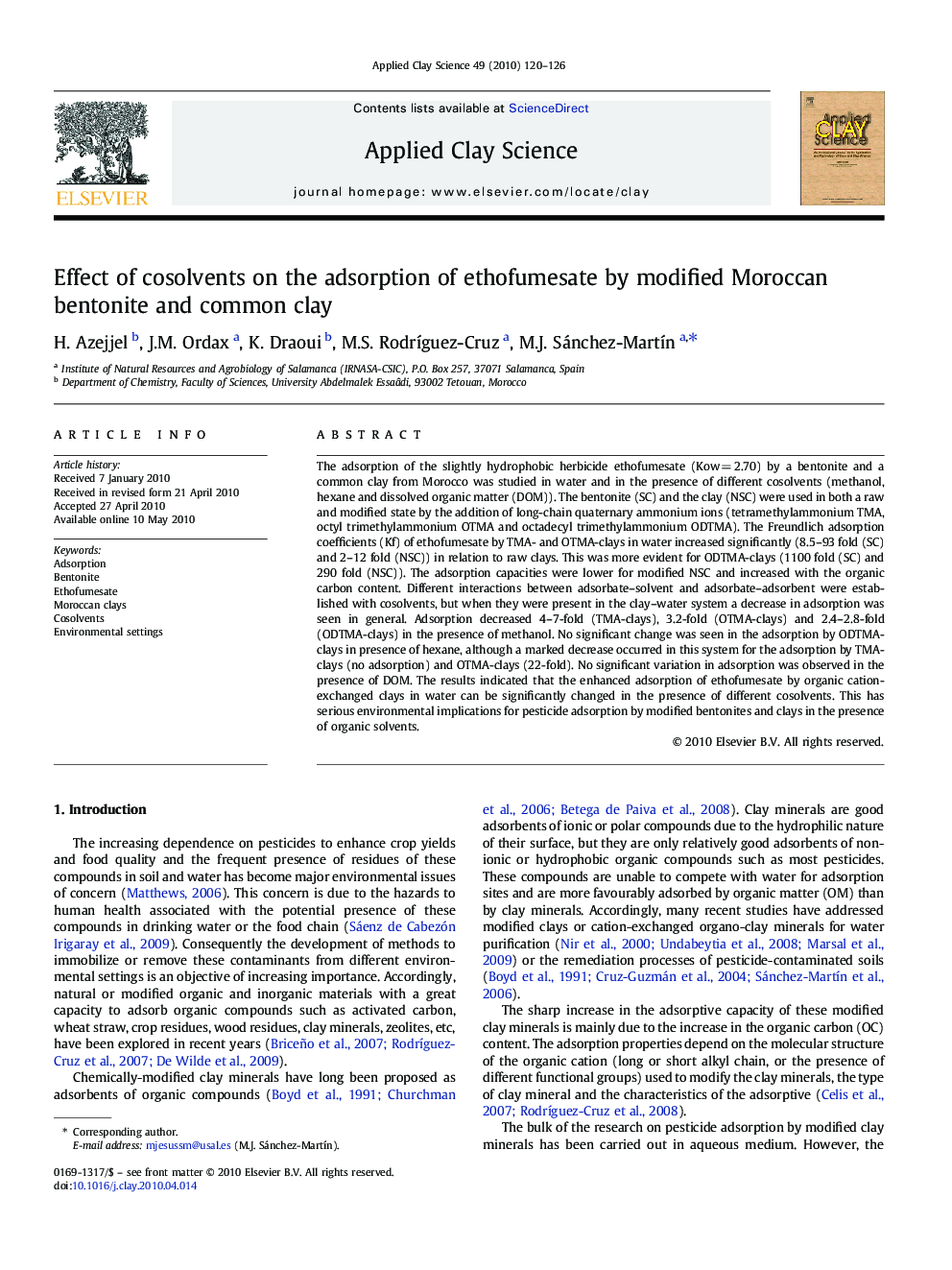| Article ID | Journal | Published Year | Pages | File Type |
|---|---|---|---|---|
| 1695843 | Applied Clay Science | 2010 | 7 Pages |
The adsorption of the slightly hydrophobic herbicide ethofumesate (Kow = 2.70) by a bentonite and a common clay from Morocco was studied in water and in the presence of different cosolvents (methanol, hexane and dissolved organic matter (DOM)). The bentonite (SC) and the clay (NSC) were used in both a raw and modified state by the addition of long-chain quaternary ammonium ions (tetramethylammonium TMA, octyl trimethylammonium OTMA and octadecyl trimethylammonium ODTMA). The Freundlich adsorption coefficients (Kf) of ethofumesate by TMA- and OTMA-clays in water increased significantly (8.5–93 fold (SC) and 2–12 fold (NSC)) in relation to raw clays. This was more evident for ODTMA-clays (1100 fold (SC) and 290 fold (NSC)). The adsorption capacities were lower for modified NSC and increased with the organic carbon content. Different interactions between adsorbate–solvent and adsorbate–adsorbent were established with cosolvents, but when they were present in the clay–water system a decrease in adsorption was seen in general. Adsorption decreased 4–7-fold (TMA-clays), 3.2-fold (OTMA-clays) and 2.4–2.8-fold (ODTMA-clays) in the presence of methanol. No significant change was seen in the adsorption by ODTMA-clays in presence of hexane, although a marked decrease occurred in this system for the adsorption by TMA-clays (no adsorption) and OTMA-clays (22-fold). No significant variation in adsorption was observed in the presence of DOM. The results indicated that the enhanced adsorption of ethofumesate by organic cation-exchanged clays in water can be significantly changed in the presence of different cosolvents. This has serious environmental implications for pesticide adsorption by modified bentonites and clays in the presence of organic solvents.
